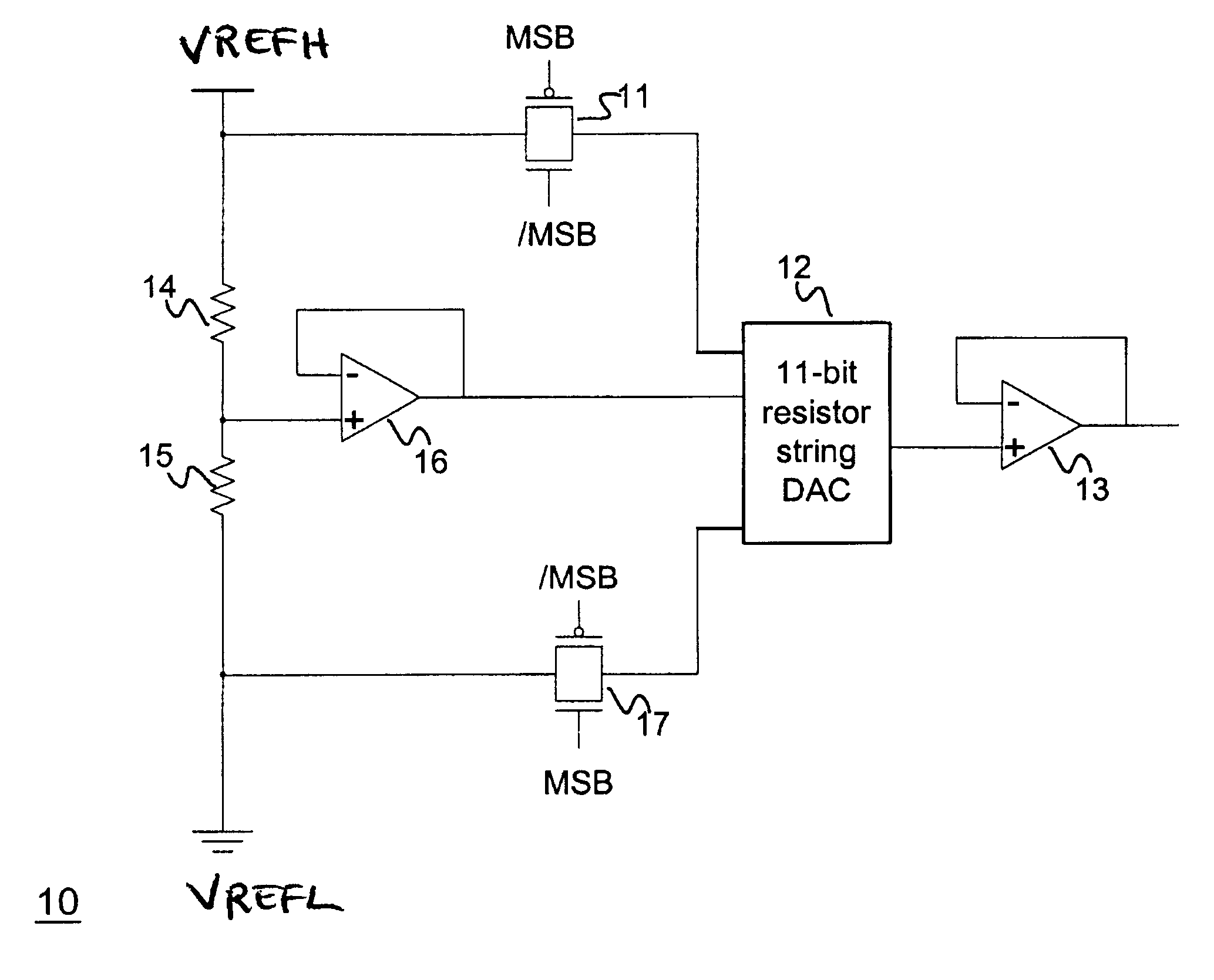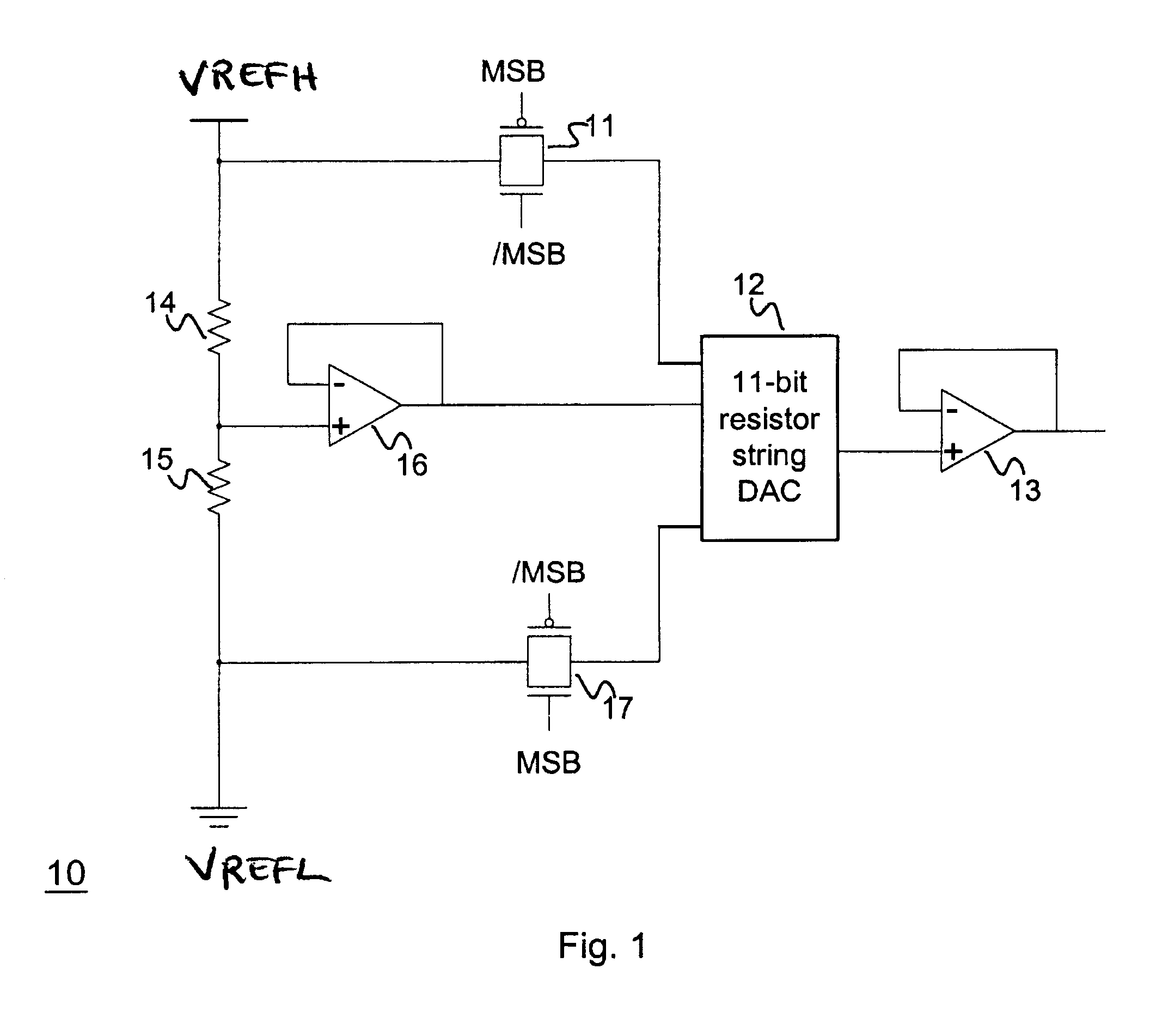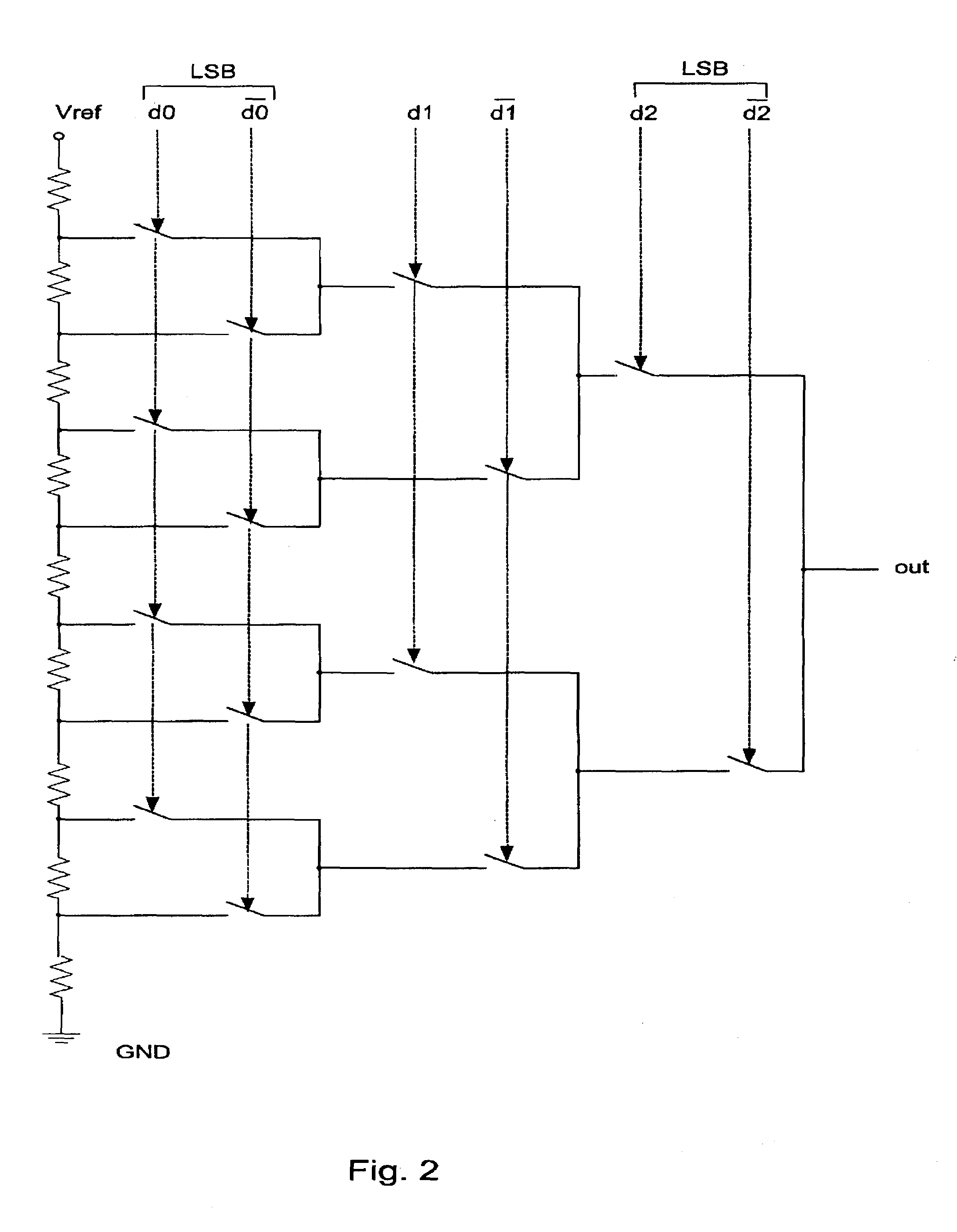Apparatus and method for a digital to analog converter architecture
a digital to analog converter and apparatus technology, applied in the field of apparatus and methods for digital to analog converter architecture, can solve the problems of difficult to achieve high-resolution nyquist-rate dacs, and achieve the effect of improving integral non-linearity and relieving matching accuracy
- Summary
- Abstract
- Description
- Claims
- Application Information
AI Technical Summary
Benefits of technology
Problems solved by technology
Method used
Image
Examples
Embodiment Construction
Electronic signal conversion architecture and circuit is provided herein, digital-analog (DAC), or optionally analog-digital (ADC), wherein effectively signal monotonicity (i.e., providing consistently increasing value) is guaranteed, and integral non-linearity is at least partially compensated.
Preferred DAC design includes two or more stages separated by a unity or equivalent gain operational amplifier. As shown in FIG. 1, a first circuit or stage is a 1-bit resistor string-converter 14, 15, having one end at reference high voltage, VREFH, and the other end at reference low voltage, VREFL, and a second circuit or stage may be any resistor string DAC, e.g., multi-bit resistor string converter 12, as illustrated in further detail, for example, in FIG. 2.
As shown in FIG. 1, buffer amplifier 16 input may couple between two resistors of 1-bit front-end, and signal output is coupled to one end of multi-bit resistor string. Thus, when most significant bit (MSB) is zero (`0`), the other en...
PUM
 Login to View More
Login to View More Abstract
Description
Claims
Application Information
 Login to View More
Login to View More - R&D
- Intellectual Property
- Life Sciences
- Materials
- Tech Scout
- Unparalleled Data Quality
- Higher Quality Content
- 60% Fewer Hallucinations
Browse by: Latest US Patents, China's latest patents, Technical Efficacy Thesaurus, Application Domain, Technology Topic, Popular Technical Reports.
© 2025 PatSnap. All rights reserved.Legal|Privacy policy|Modern Slavery Act Transparency Statement|Sitemap|About US| Contact US: help@patsnap.com



